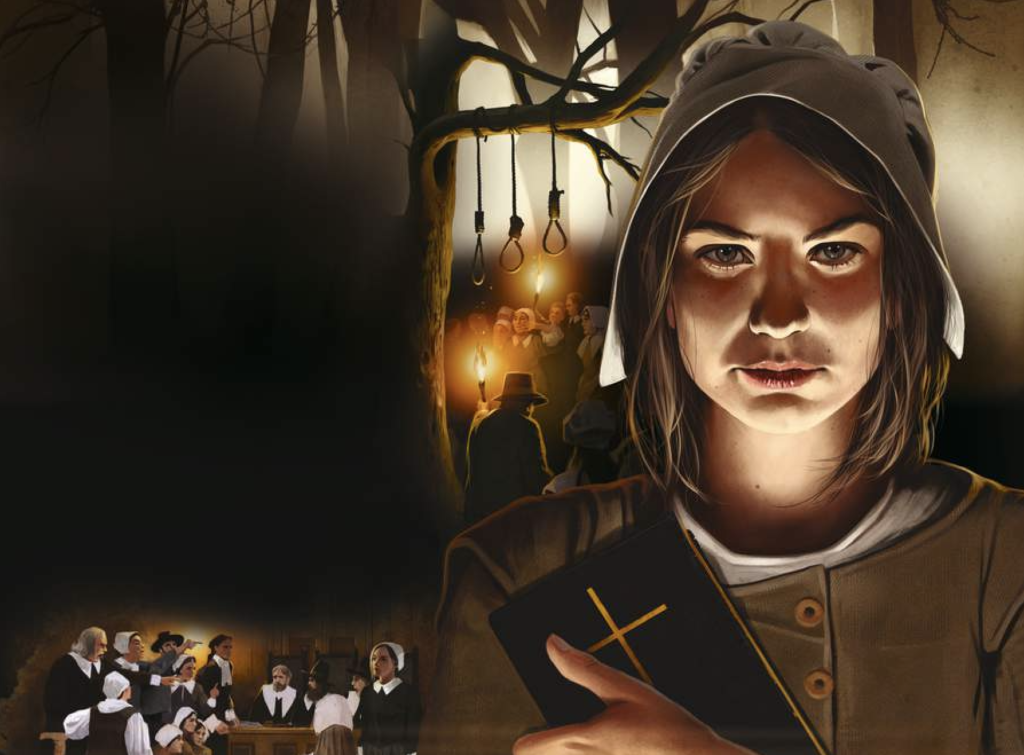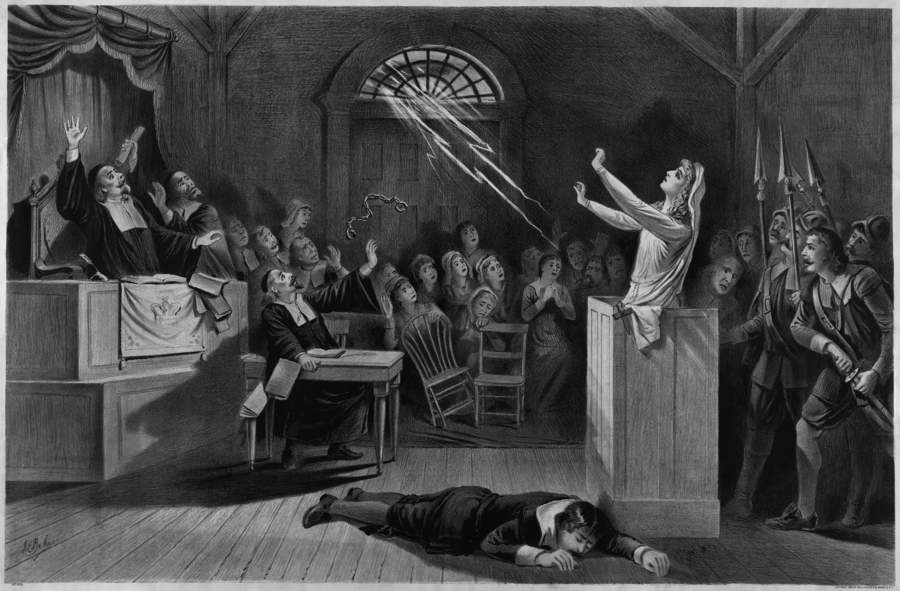Why the Salem witch trials happened
by Ailsa Harvey · 07/05/2021
How did mass hysteria and misinformation in 17th-century America become a cautionary horror story?

The term ‘witch’ most likely conjures up a specific image in your mind, one of female figures with suspicious bubbling cauldrons and bulging warts. The term carried the same connotations in the 17th century, a witch being someone who obeyed Satan and had what was thought to be unusual powers. In these dark times, spell-casting and acts of evil were seen everywhere.
Many of us accept that our lives will come with elements of greatness and events of misfortune. When unfortunate things happen, we may feel the need to find a reason, or a cause to blame. But how far would you go to place this blame? Would you make up a story that you knew would get someone killed? This was the reality for victims of the Salem witch trials. They were either in the wrong place at the wrong time, or they didn’t fit in with the ideals of their society.
In the 1600s Salem, Massachusetts, abided by Puritan values, which included believing in demons and the devil in everyday life. The large majority of the population followed the Bible rigidly. If anyone was perceived as a threat to this way of life, there was a conveniently simple solution used to banish them: declare them to be a witch. This played on the idea that anything outside what was believed to be the correct way to live must be the work of the devil. Many couldn’t understand other ways of living. Rifts between people made it easy for them to accuse each other of witchcraft, even knowing the harsh consequences.
In modern times it might be hard to fathom that so many could truly believe witches existed at all, let alone lived among them. But these beliefs were prevalent across Britain, parts of mainland Europe and America in the 16th and 17th centuries. Witchcraft was regarded as one of the greatest crimes of the time, with courts designed primarily for witches.

When enough people accept something, it becomes the truth. In the case of late 17th-century Salem, the truth was a terrifying one. Imagine believing that the people who live around you could be communicating with Satan and dictating your life. Just like the news today can spread knowledge and concern effectively throughout society, the worrying topic du jour in 1692 was witchcraft.
Herbalists and healers were an obvious scapegoat. As people who understood elements of medical science and worked to help others recover from sickness, at the time people were amazed by their skill. While the response should have been one of gratitude, those who didn’t believe these medical miracles were possible needed answers. Unfortunately magic was the only available answer for those who didn’t understand, and healers were seen as sorcerers.
There was no precise vision of what these witches were. All that was known at the time was that they were dangerous and powerful. The majority of those who were convicted of witchcraft were female. Of the 19 people killed by hanging in Salem, only five were men. Another man was tortured to death with heavy stones as the villagers tried to get him to confess.
Although some were forced to plead guilty, it wasn’t necessary; the word of the accuser was often enough. The mere idea that witchcraft could be real often struck such fear into a jury that the accused was convicted, in their minds, before the trial had even begun. But how could such loose evidence be used to determine a person’s fate within a courtroom, designed to allow fair decisions to be made? One reason was that different courts were established specifically to test witchcraft, separating these cases from regular crimes. With new rules and procedures fabricated for the new witch courts, the accused individual would be put through a series of tests that lacked evidence and legitimacy. These could vary dramatically between each hearing, but they often tested unrelated skills or were open to being staged purely in order to convict the innocent.
As people in Salem got used to witchery being an answer to any misfortune in their lives, cases spiralled out of control. With no need for real proof of witchcraft, a rising number of people were being convicted, all because the communities needed a scapegoat for their troubles: a recent smallpox epidemic had caused widespread suffering, while tensions and rivalry grew with the neighbouring town. Not knowing when Salem would be under attack, or when a loved one would suffer, witch hunting could have served as a means of regaining power- seeking out the surrounding danger before it found them.
For more science and technology articles, pick up the latest copy of How It Works from all good retailers or from our website now. If you have a tablet or smartphone, you can also download the digital version onto your iOS or Android device. To make sure you never miss an issue of How It Works magazine, subscribe today!




